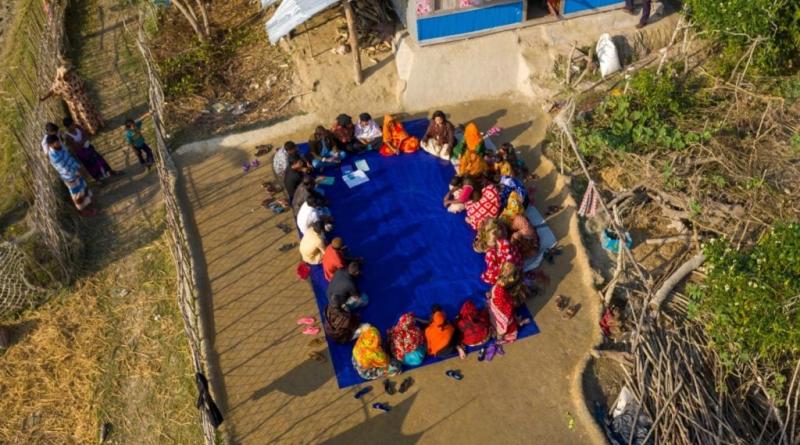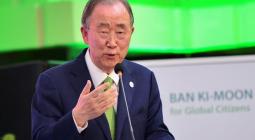Effective climate adaptation must be locally-led

The Intergovernmental Panel on Climate Change (IPCC)’s Sixth Assessment Report, released in 2021, stated that South Asia will face intensified monsoon seasons, heatwaves and changing snowmelt patterns as the planet warms. And yet, the people most affected are often left out of adaptation projects.
According to the think tank International Institute for Environment and Development (IIED), “estimates suggest under 10 per cent of climate finance is prioritised for the local level,” underscoring the fact that adaptation decisions often fail to encapsulate local realities and knowledge. This is despite the IPCC stressing the importance of local level decision-making for facilitating effective adaptation in its 2022 report on Climate Impacts, Adaptation and Vulnerability.
From community-based adaptation to locally-led adaptation
The concept of community-based adaptation (CBA) was an early effort to involve those most affected by the impacts of climate change. The concept, pushed by researchers, academics and practitioners from the early-to-mid 2000s, focuses on empowering communities to utilise their own knowledge and decision-making processes for climate action. However, over time, CBA has been critiqued for following top-down approaches in implementing adaptation interventions.
Critiques of CBA projects have highlighted issues including unpredictable and short-term funding; external definition of adaptation priorities; lack of rapport and trust-building between implementers and beneficiaries of projects; and poor coordination and communication within and between organisations involved. In sum: the approach did not reflect the local lived realities of marginalised communities and hence had little long-term impact in ameliorating the livelihood challenges they face from climate shocks.
This led to the concept of locally-led adaptation (LLA) to climate change impacts emerging at the end of 2020, which focuses on decision-making around adaptation led by local people, knowledge and institutions. A key leader was the think tank International Institute for Environment and Development (IIED), which in early 2021 collaborated with a consortium of researchers and civil society organisations, including Saleemul Huq, to lay out eight key principles of LLA.
Since 2021, more than 100 donors and government bodies have endorsed these principles. The locally-led adaptation approach is appropriate for all South Asian nations, if they want to focus on curating local leadership in tackling the climate crisis.
The challenges of finance
To implement LLA fruitfully, existing challenges related to funding need to be dealt with. Currently, grassroots and local organisations in South Asia have minimal direct access to funds for climate adaptation, whereas funders and international organisations have more control of money and resources. LLA promises to change this dynamic and enhance local actors’ control over resources, by transferring a considerable degree of decision-making power from international organisations and funders to subnational and local actors. This can be achieved by transforming how institutions disburse and direct adaptation finance into a cooperative exercise, with funders maintaining a consistent dialogue and consulting local communities over key decisions, enabling them to apply their creativity to in developing adaptation solutions based on local realities.
In an example of LLA in action, a programme launched in July 2022 by NGO CARE Bangladesh has been promoting local community-led innovation in curtailing the impacts of salinity intrusion in the country’s south-west coastal region. The projects are designed in close consultation with local communities developing locally viable adaptation solutions such as integrated aqua farming and adaptive kitchen gardening.
NGOs, donors, research organisations and consulting companies need to transform themselves to interact with and be directed by local actors
LLA envisions finance mechanisms that prioritise access to funds by local actors, and take into consideration the various barriers to accessing finance that groups may face. It is vital to shift current power structures and increase local actors’ abilities to directly access, control and monitor funds based on their own context-specific needs. To do this, funding agencies and intermediaries should ensure that local actors are not unnecessarily burdened with reporting duties relating to fund management.
NGOs, donors, research organisations and consulting companies need to transform themselves to interact with and be directed by local actors, as opposed to international consultants and researchers. As Sheela Patel, founder and director of the Society for Promotion of Area Resource Centres (SPARC) in India and a prominent cheerleader of LLA said on a recent podcast, “One way of transforming existing power structures is to have more and more grassroots leaders sitting with people who make decisions about money.”
Ensuring downward accountability
An LLA approach can help to reduce costs by omitting costly middle players, thereby freeing more funds to go directly to local communities and adaptation interventions. Central to the idea of LLA is downward accountability – where funders and other external stakeholders report back to local actors. In theory, funders and implementing NGOs and INGOs would meet regularly with local actors to share transparent information about usage of adaptation funds and receive feedback, allowing monitoring and evaluation processes to echo local priorities and empowering local actors to hold project leaders and funders accountable.
While there are not yet examples of this working in practice, now – particularly during COP28 – is when stakeholders in international climate finance should consider integration of human rights, climate justice, and pro-poor aspects into adaptation funds, as opposed to only considering projects’ economic outcomes.
IIED’s Climate Finance Guide for Investing in Locally Led Adaptation, published in November 2022, highlights existing financial mechanisms in Africa, Asia, Latin America and the Caribbean which are supporting leadership of local communities in adaptation.
One example is the Urban Poor Fund International, established by Slum Dwellers International, which since 2007 has provided USD 87 million to urban poor communities residing in 12 countries in Africa and Asia, including India, which works to build trust with local communities and empower them to determine and respond to climatic hazards such as landslides, drought, flooding, and extreme heat. It then provides patient and predictable finance and support, empowering grant recipients to plan and implement their own ideas for building resilience to climatic shocks.
In South Asia, Nepal has promised to invest 80% of climate finance in local communities’ needs and priorities, and in 2011 created the Local Adaptation Plans of Actions (LAPA) Framework, which aims to incorporate climate adaptation and disaster risk reduction into local development processes. So far, LAPAs in Nepal have delivered adaptation strategies and action plans for agriculture, food security, access to water, watershed management, forestry, energy, biodiversity and landscape management and physical infrastructure, helping local communities tackle the underlying drivers of vulnerability and formulate robust responses to future climate impacts.
Analysis of these programmes reveals several important lessons: a community’s engagement is imperative in designing adaptation delivery mechanisms; there is no one-size-fits-all solution; existing systems and endogenous organisations should be engaged where possible as delivery partners; and locally-led finance mechanisms must focus on building capacity in local organisations and communities.
COP28: an opportunity to push for change in climate adaptation
To conclude, the ideal picture for South Asian nations is one in which adaptation investment is designed for long-term implementation rather than short-term projects only. As Saleemul Huq, one of the foremost champions of climate justice recently said: “Even if funding is provided to projects with limited duration, emphasis must be placed on what the projects will leave behind once they are over, rather than on what is done during project implementation. Thus, investment in adaptation to climate change should be seen as investment in long-term capacity-building.”
The upcoming climate summit COP28, to be held in Dubai, could offer a transformative moment for equitable adaptation finance. It is an opportunity to convince donors and financiers to take a longer-term programmatic approach to climate adaptation, one which allows flexibility and adaptive programme management, and one which learns from both successes and failures.
This article was illuminated by my mentor, Saleemul Huq, just weeks ago, before he passed away on 28 October 2023. This piece is a tribute to his visionary, transformative and empathetic thinking. Saleemul Huq was the founder and director of the Dhaka-based International Centre for Climate Change and Development (ICCCAD). An expert in the fields of climate change, environment, and development, his work focused adapting to climate change and mitigating its effects from the perspective of Least Developing Countries (LDCs). He attended all sessions of the Conferences of the Parties (COPs) of the United Nations Framework Convention on Climate Change (UNFCCC) until he passed away. Today, we at ICCCAD and others in the climate community who knew him mourn and pray for his departed soul.
Image: UNDP Climate / Flickr, CC BY-NC





